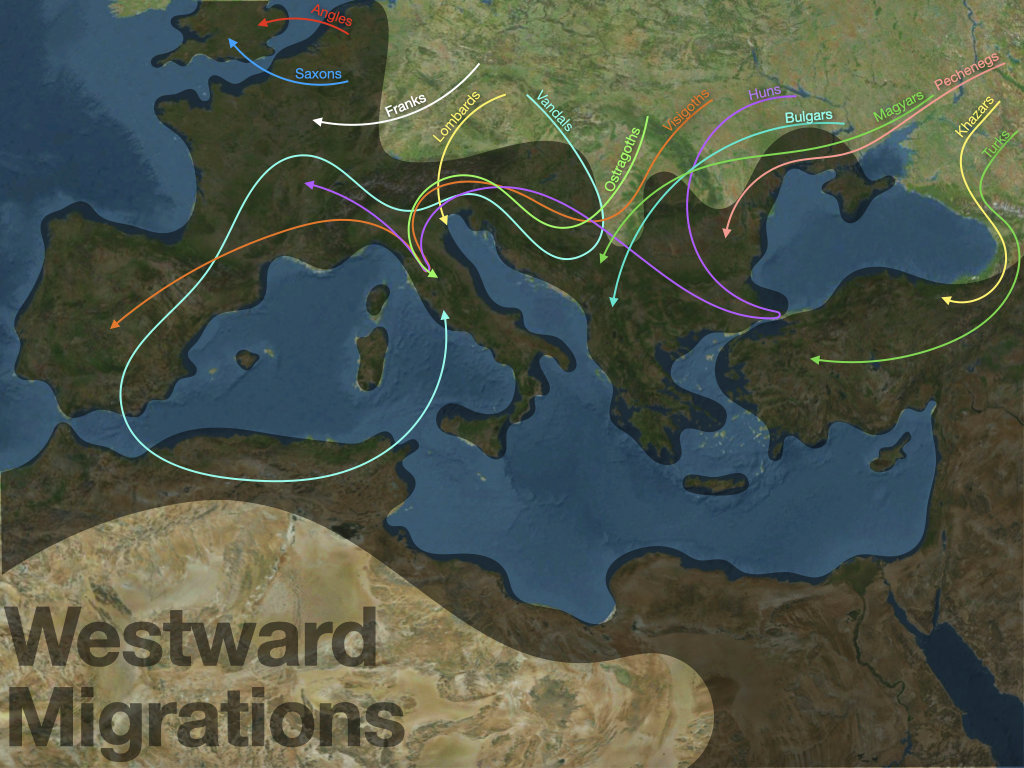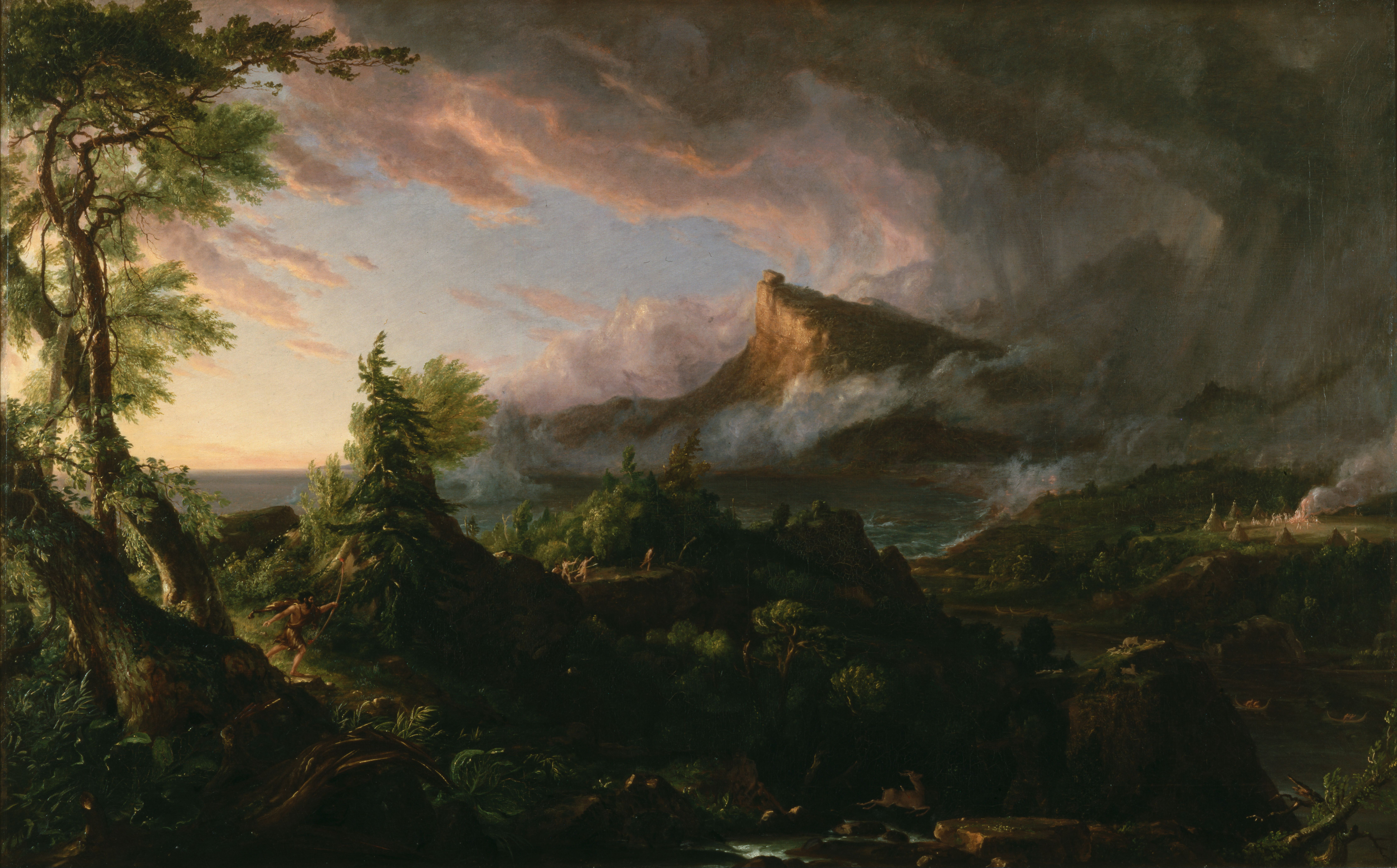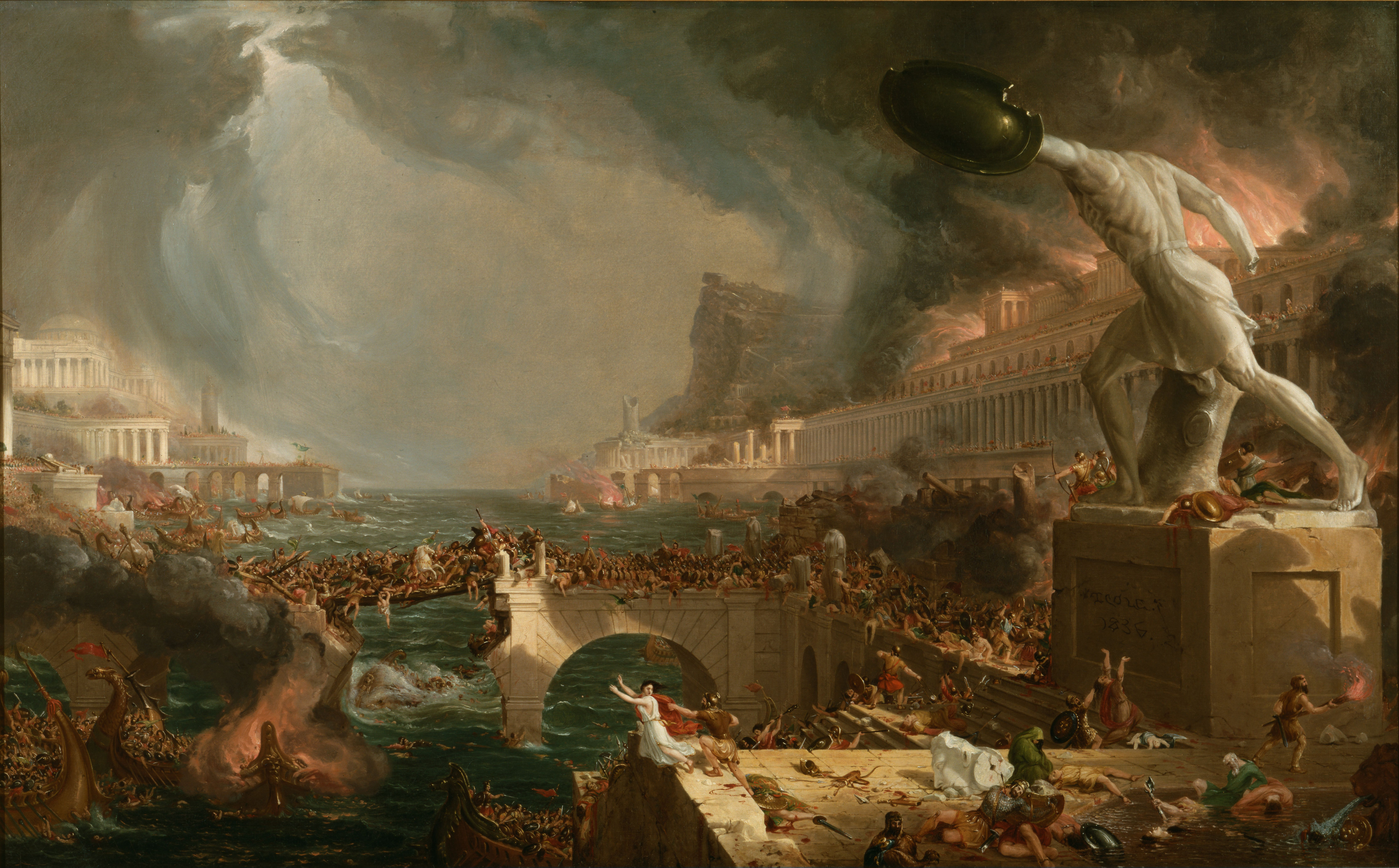The Fall of Rome
Late Antiquity
In the second century AD, the Eurasian continent was largely divided between a stable superpower (Rome) in the west and another stable superpower (Han China) in the east. In the middle, on the hilly grassland called the Eurasian Steppe, dwelt numerous groups of semi-nomadic peoples. These people tended to move eastward or westward out of the steppe, either evading conflict with other nomadic tribes or simply seeking the comparative luxury of the great empires. This brought them into conflict with the Romans and Chinese. Large groups of different ethnicities forced their way in, settling in new areas. This process continued for hundreds of years, most intensely during the Migration Period of the 3rd through 7th centuries. Many modern countries trace their origins, and their present-day international relations, back to this period.
Around the same time the Jin Dynasty was struggling with civil war and barbarian invasion, the Roman Empire was dealing with the same situation. Goths, Vandals, Franks, and Huns crossed the Rhine and Danube frontiers, and the Roman response was generally too weakened by internal conflict to stop it. Even as these "barbarian" peoples became culturally Romanized, they began exterting more independent control over Western Europe. This culminated on September 4, 476 AD, when a Gothic general named Flavius Odoacer deposed the Western Roman Emperor, Romulus Augustulus.
Now, if you told a Roman on September 5 that the Empire had fallen and he was now living in the "Dark Ages," he would have been rather surprised to hear it. Emperors got deposed all the time, and you could be certain taxes were still due next spring. What makes this moment unique, however, is that Odoacer neither proclaimed himself emperor (which would have been difficult since he was not a Roman), but neither did he prop up a puppet emperor. He simply took Augustulus' imperial regalia and sent it to Constantinople along with a note informing the Eastern Emperor, that Odoacer would now be ruling Italy in his name.
Historians call this the "Fall of the Roman Empire," although the emperors in Constantinople went right on ruling - theoretically over the whole empire - for another thousand years, the Pope continued to exert massive influence from Rome, and another Western Emperor would be proclaimed in 800 AD. Nevertheless, the "Fall of Rome" is embedded in the Western imagination, leading to cool paintings like Thomas Cole's 1833 The Course of Empire series:
The Eastern Romans were not in a position to send an army back to Italy to fight the Goths, and imperial control over the West continued to weaken until the western provinces fragmented into de facto independent kingdoms. Modern Europe began to take shape as non-Roman peoples settled in former Roman territory, integrating their cultures with the Empire's. The province of Britannia was invaded by tribes of Angles and Saxons. Hispania was overrun by the Visigoths (eastern Goths) while Flavius Odoacer and his Ostragoths (eastern Goths) took over the province of Italia. The province of Gaul came under the domination of a Germanic tribe called the Franks, and thus became known as Francia. Northern Africa fell under the control of the Vandals. The Gothic, Frankish, and Vandal rulers were careful to pay lip-service to the Roman emperor, but knew very well they could do as they pleased.
Without the unity provided by the Empire, the Latin language developed regional dialects that mixed with local languages to create the modern languages of Europe: Hispanic Latin became Spanish; in Francia, Latin mixed with Frankish to become French; Latin as spoken on the streets of Rome and the rest of its homeland throughout the Italian peninsula became known simply as Italian.
With the decline of Roman power came a gradual decline in Roman identity, and the dominant cultural force in Europe slowly shifted from the political unity provided by the Empire to the spiritual unity provided by Christianity. In the city of Rome itself, the only real authority remaining was the Pope, who gradually became not only the spiritual leader, but the political ruler as well. In the midst of this political disintegration, a book called City of God was penned by an African bishop named Saint Augustine. Among many other important ideas, Augustine proposed that a person is not defined primarily by citizenship or political status, but by his or her individual relationship with God; this idea set the intellectual stage for the European medieval period and laid the groundwork for the modern concept of individual rights.
Many people fled from the cities, seeking the peace and quiet of religious communities called monasteries and convents. Soon, these communities became the centers of European culture and education, preserving literacy and ancient Greek and Roman knowledge while making advancements in philosophy, theology, and music.





